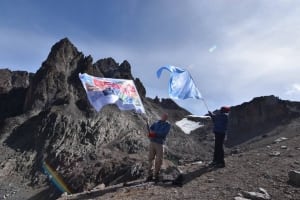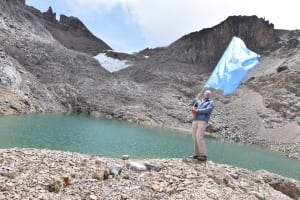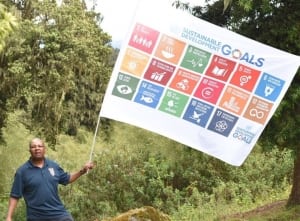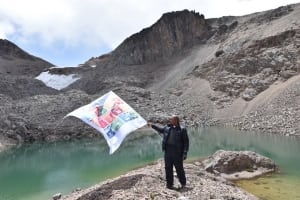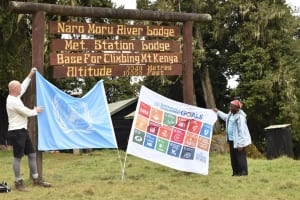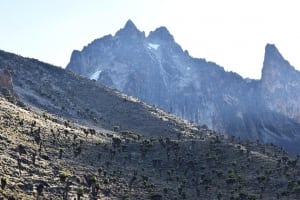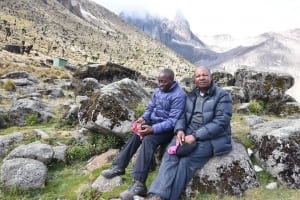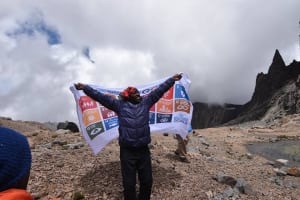To bring attention to the Paris Agreement on Climate Change signing ceremony on 22 April, a team from the United Nations Information Centre in Nairobi set off to climb Mount Kenya, where glaciers are rapidly diminishing. Mount Kenya, Africa’s second-highest mountain at 17,330 feet, has lost 92% of its ice cap in the last century due mainly to global warming.
While on their journey, UN staffers Newton Kanhema and Bo Sorensen captured images of the fast retreating icecaps long identified with this famous mountain. They also took the UN and Sustainable Development Goals flags to symbolize international efforts that are underway to halt the impact of climate change on the African continent.
Mount Kenya, one of the few equatorial mountains with an ice cap, is both a major tourist attraction and the origin of many rivers that are a major source of water and hydrological power for Kenya’s 45 million people.
The Gregory and Krapf glaciers on the mountain have almost disappeared, and Lewis Glacier, the biggest of them all, retreated by more than 800 meters between 1893 and 2004, and lost almost 16 metres of thickness between 1979 and 1996.
Sid Chatterjee, the Acting UN Resident Coordinator for Kenya, said the world is at a crossroads to choose to do business as usual or take action that mitigates the rapid climate change likely to be a disaster for people who depend on the water from Mount Kenya.
“The most vulnerable people and poorest – mostly those who have done least to cause climate change – need global support to reduce their exposure to climate impacts,” Chatterjee said.
More photos: Impact of Climate Change in Mount Kenya
Via UN Information Centre Nairobi
- UN staffer Newton Kanhema waves the SDG and UN flags on Mount Kenya. Photo via UNIC Nairobi
- UN staffer Bo Sorensen waves the UN flag near a receded glacier on Mount Kenya. Photo via UNIC Nairobi
- UN staffer Newton Kanhema waves the SDG flag on Mount Kenya. Photo via UNIC Nairobi
- UN staffer Newton Kanhema waves the SDG flag on Mount Kenya. Photo via UNIC Nairobi
- UN staffer Newton Kanhema and a guide wave the SDG and UN flag on Mount Kenya. Photo via UNIC Nairobi
- Mount Kenya’s ice cap has receded 92% in the past century. Photo via UNIC Nairobi
- UN staffer Newton Kanhema and a guide take a break from their strenuous hike on Mount Kenya. Photo via UNIC Nairobi
- The Sustainable Development Goals flag waves on Mount Kenya. Photo via UNIC Nairobi


